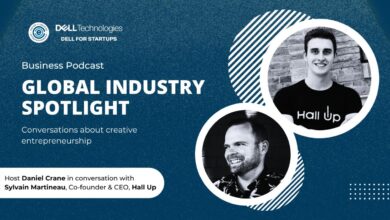Spotlight: The University of Southern California in Media Technology Innovation

This November, the first Infinity Festival is taking place in Beverly Hills. At this festival, the leading Silicon Valley innovators are coming together with Hollywood’s Storytelling professionals for a weekend of discussion about media and technology. As a current USC student, not too far away from where this festival is taking place, what is going on at school that engages in the broad term of media and technology innovation?
1. USC Iovine and Young Academy
USC’s 20th professional school called the Iovine and Young Academy fosters students’ creativity at the intersection of four areas: arts and design; engineering and computer science; business and venture management; and communication. Started in 2013 with a visionary gift from Andre Young and Jimmy Iovinne, the “Academy” aims to shape innovators for an advancing technological world. Teaching students a variety of skills necessary to start a company, the Academy pushes for innovation amongst its cohorts. Senior year students work to develop their own startup.
The Iovine and Young Academy has an acceptance rate of eight percent, but other USC students can apply to take a minor in the Academy. This unique school engages with media and technology and is not like a typical major, as rising sophomore in the Academy Halle Baerenstecher notes, “Art and technology play equal parts when creating businesses. Problem based learning brings people with different perspectives and specialties together to create innovative solutions/startups.” Halle is currently working on creating her own company called “Upcycled Denim” that recycles old jeans into a new, trendy product. Recently graduated Academy students Ben Taft, Montana Reed, and Matt Stern created the the Mira Augmented Reality Headset. The AR headset works with a smartphone to allow users to use AR applications, which normally have high barriers to entry.
2. USC Institute for Creative Technologies

USC Institute for Creative Technologies (ICT) combines artificial intelligence, graphics, virtual reality, and narrative communities to advance immersive technologies and technologies to solve problems of service members, students, and society. ICT is DoD- sponsored University Affiliated Research Center (UARC), and it works in collaboration with the U.S. Army Research Laboratory. Utilizing USC’s film and game industry artists with computer and social scientists, ICT projects and research explore how to advance immersive media for military training, health therapies, education, and more.
Although typically used for entertainment, VR at ICT is being utilized to treat veterans with PTSD. Bravemind VR Exposure Therapy is a clinical and interactive software created at USC ICT, and it is provided free of charge for its clinical and research use for documenting clinician/researcher expertise in the area of prolonged exposure therapy for the treatment of combat-related PTSD. Lead by Dr. Skip Rizzo, the Bravemind pushes for innovation in media and technology that serves veterans.
Although located in its own facility off campus, ICT allows undergraduate students to apply for internships and for PHD students to apply to study under a professor.
3. Annenberg Innovation Lab
Erin Reilly is helping build the Infinity Film Festival in Beverly Hills; At USC, she is a founding member of the Annenberg Innovation lab. The Annenberg Innovation Lab (AnnLab) is a Think & Do Tank helping media and technology work together. With creativity and curiosity in mind, diverse scholars and practitioners work together to address complex problems and opportunities at the intersections of media, technology, culture, and society. The Annenberg Innovation Lab encourages a wide range of participants with having a fellowship program, classes, events, projects, and more.
Emerging from the Annenberg Innovation lab, The Edison Project asserted that the Media and Entertainment industry is engaging in its most radical period of change since Edison and his team invented the kinetoscope. With this change, the Edison Project engaged in research based on four pillars: The New Metrics + Measurement, The New Funding + Business Models, The New Screens, and The New Creators + Makers. Resulting in an e-book, the Edison Project focused on creating and anticipating ways to take advantage of new trends and disruptions in the Media and Entertainment industry.
4. USC Interactive Media and Games Division
With the gaming industry rapidly growing due to creative exploration combined with technological advancements, USC School of Cinematic Arts has created an Interactive Media & Games Division. The major pushes students to engage with and create gaming innovation. With a range of minors, majors, and masters program, USC Interactive Media and Games Division allows a variety of ways for students to get involved.
Keanu Concepcion, an interactive media and games division major, pitched the idea of an Esports program during his time at USC. Unlike most college sports leagues which are ran by athletic departments, Esports is connected with its game design program. Esports league at USC has a varsity gaming team that competed against rival schools such as UCLA.
5. Thornton School of Music Technology Program

USC Thornton School of Music created a new bachelor’s program that incorporates the creative, technical, and business aspect of professional music. Motivated by the evolution and nature of professional music making in the digital age, the Music Technology Program educates students in an industry goes beyond traditional music skills; students learn composing and arranging, live and studio performance, audio engineering/editing and mastering, music synthesis and programming, as well as most or all of the business aspects related to music.
This program expects students to collaboration with a plethora of other USC students with other skills sets, such as songwriters, artists and bands, video directors/designers, art and design majors, engineers, journalism majors, and communication majors. Additionally, students have the opportunity to develop skills using technology in live performance and multimedia. With the job description of a music artist evolving, this academic program is geared to encompass a skill set geared towards the changing industry.
6. USC’s Startup Community
Not only does USC offer different programs focused on a wide variety of aspects of media- ranging from film, television, gaming, and music- but USC fosters a startup culture within its community that pushes for media and technology innovation. The club “Spark SC” is a student run organization whose purpose is to inspire students of all background to pursue entrepreneurship. Moreover, the student run club Lava Lab jointly sponsored by the Marshall School of Business and the Viterbi School of Engineering serves as a hub for entrepreneurs and has incubator programs. Additionally, USC has an entrepreneurship school; USC Marshall’s Llyod Greif Center for Entrepreneurship Studies has undergraduate curriculums and graduate programs. As a student myself, I feel like my peers are constantly trying to create the newest app or internet trend. The energy on campus feels passionate and motivated towards innovation. USC student Maxine Marcus is the CEO/Founder of Ambassadors Company, which is a teen insights, consulting, and feedback company that provides teen perspective on products, marketing strategies, brands, and investment decisions. She feels that “USC fosters innovation simply because of the fact that the USC startup community is so large. As a founder of my own business, I don’t necessarily feel THAT ‘unique’ at USC simply because there are so many amazing startups. I think it really pushes me to continue growing my business and use the community around me to push me.”






